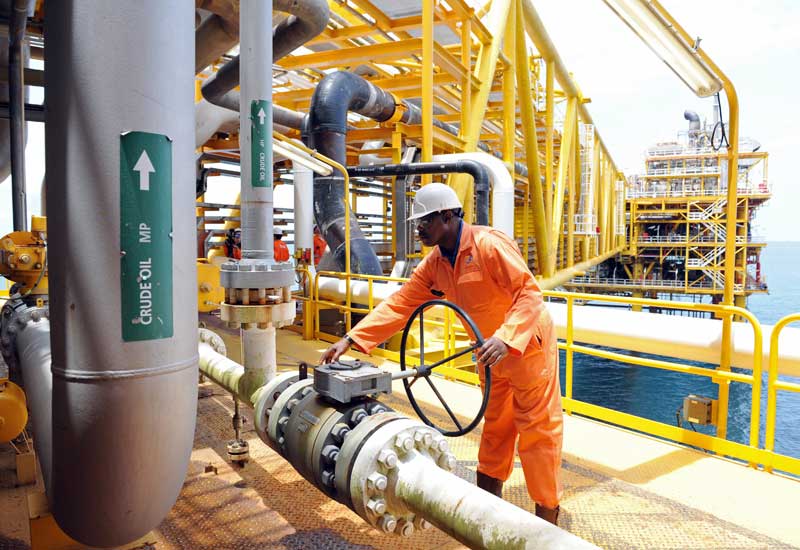Eni, Exxon, Equinor, Shell and Total: who risks with the energy transition? Report

The energy transition could lead to lower oil prices by $ 10 per barrel, according to a report by Rystad Energy. Who risks more and who risks less between Eni, Exxon, Equinor, Shell and Total
The crises of recent years and the energy transition have long been putting pressure on the resilience of global upstream portfolios and this can clearly be reflected in a long-term risk on oil prices and oil companies. According to consultancy Rystad Energy, the downside risk that the energy transition can lead to oil prices is calculated as high as $ 10 a barrel over the long term, which means that crude oil values could be $ 10 lower in the future. what they would otherwise do if the transition to cleaner energy did not accelerate.
RYSTAD ENERGY ASSESSMENTS ON ENI, SHELL, EQUINOR AND TOTAL
According to the consultancy, this downside risk of oil prices is by far the main factor in determining the resilience of global upstream E&P portfolios, along with the potential increase in costs of carbon emissions. For this Rystad Energy studied the resilience of the portfolios of the top 25 non-national oil and gas companies and found large differences in their robustness with respect to the risks of lower commodity prices and higher CO2 taxes.
WHAT WILL BE THE EFFECT OF THE ENERGY TRANSITION
"While the average value of the volume at risk portfolio (stranded assets) is normally very low, contributing less than 1% on average to the valuation reduction, the value at risk due to price has the greatest impact, contributing to a reduction average of 30%. The value at risk due to cost (CO2 tax) is low for most companies, mostly below 10%. As a result, up to 30-40% of the net present value of an average portfolio is at risk from the energy transition, ”the analyst firm said.
THE RISKS OF TRANSITION DEPEND ON THE COMPANY
Clearly, the research highlighted, “the risks of the energy transition vary by E&P company. Equinor, for example, whose risk is relatively lower than other competitors, could see the value of its upstream portfolio reduced by $ 21.8 billion, nearly 30%, with a drop in the price of oil by $ 10 a barrel. and a CO2 tax, ″ said Espen Erlingsen, head of upstream research at Rystad Energy.
COMPANIES WITH HIGH PRICE RISK ARE THOSE ACTIVE IN SHALE OIL
For Rystad Energy, there is, in essence, a wide range of price risk between the various companies. For some, the value drops by around 50% when the long-term price of oil falls by $ 10 a barrel. The most at risk, in this sense, are the companies active in the oil sands sector (shale / tight oil). The reason these companies are most affected is very simple: their portfolios typically include assets with high break-even prices.
THE OTHER HAVE RISKS IN THE 20-25% RANGE
On the other side of the scale, most majors have a reduction in value due to price risk in the 20-25% range. Mature assets and high gas content help reduce the risk for these companies, Rystad Energy admitted.
THE RISK OF CO2-RELATED COSTS
In addition to crude oil prices, the other major influencing factor is related to the cost of CO2 : in this case the oil sands companies have the highest cost risk, and according to the analyst firm the value of their portfolio decreases by about 30% if, for example, the CO2 tax were to be set at $ 100 per ton.
FOR ENI, SHELL, EQUINOR AND TOTAL MODEST RISK VALUE
Research carried out by Rystad Energy shows that Eni, Shell, Equinor and Total all have very similar scores with a modest risk value. Conversely, ExxonMobil has a higher income risk than its competitors, mainly because its portfolio includes several large capital-intensive projects such as Permian tight oil and its Guyana operations.
“Producers with less profitable projects, such as tar sands and shale / tight oil, are generally punished in terms of both revenue and costs. The main reason for this is that the profitability of these projects is very sensitive to price and cost changes. In addition, tar sands projects typically have high CO2 emissions, which increases their cost risk, ”concluded the consulting firm.
This is a machine translation from Italian language of a post published on Start Magazine at the URL https://www.startmag.it/energia/eni-exxon-equinor-shell-e-total-chi-rischia-con-la-transizione-energetica-report/ on Mon, 08 Mar 2021 04:58:13 +0000.
